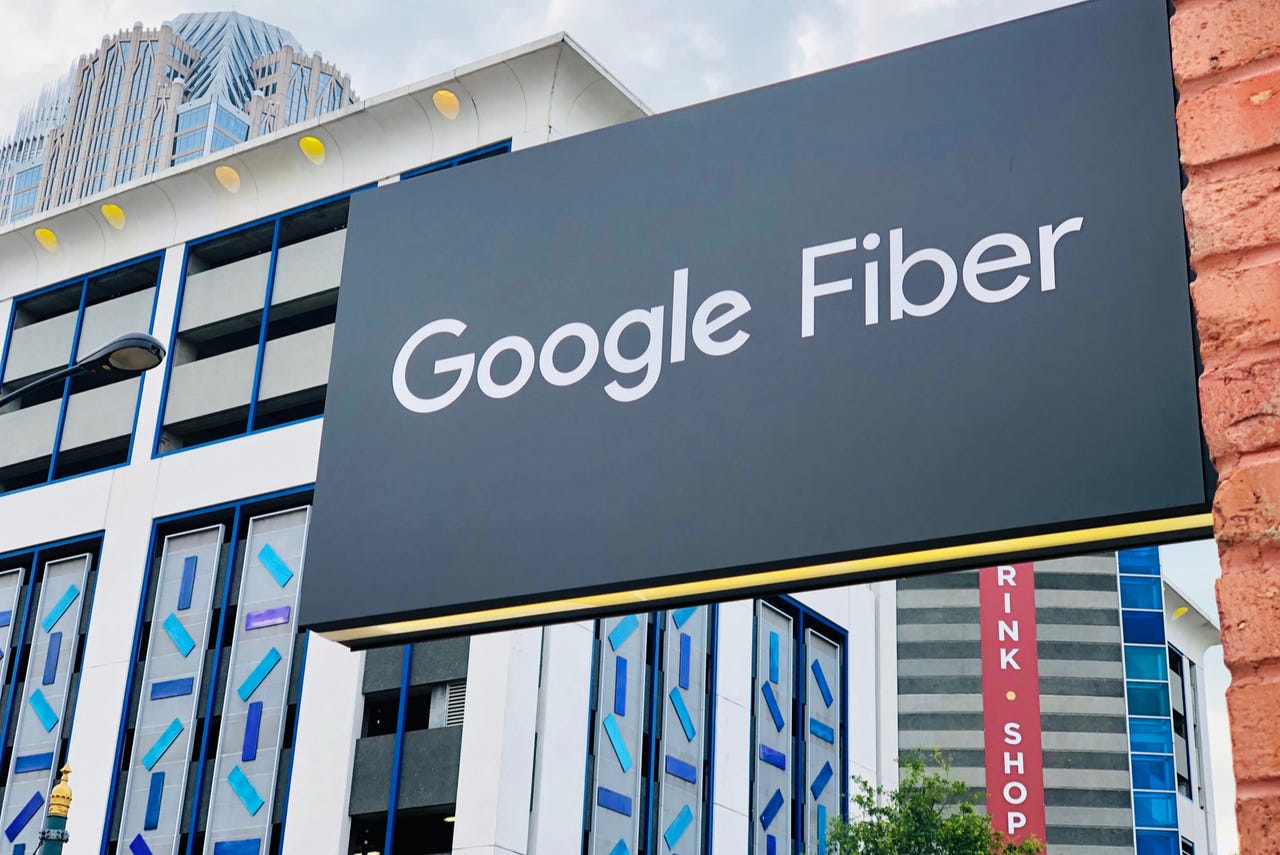Google Fiber touts 100Gbps broadband in multi-gig challenge to rival ISPs


Alphabet's 'Other Bets' ISP, Google Fiber, has outlined plans to transform its brand from a 'gigabit' service to a 'multi-gig' one that will eventually deliver 100Gbps.
Google Fiber, which has been available in parts of the US since 2012, wooed customers with the promise of one gigabit speeds that US incumbents like Comcast, Time Warner Cable and AT&T could not match.
This forced incumbents to boost speeds in areas where Google Fiber was available, but its coverage was limited and remained stagnant for five years until last month, when it revealed plans to expand to five more states.
Also: How we search the web is changing, so Google Search is changing too
Now, Google Fiber seems ready to reignite competition. The ISP's CEO Dinni Jain says he wants to offer affordable access to multi-gig speeds and claims that a colleague recently got 20Gbps download speeds in Kansas City when testing the service.
"We used to get asked, 'who needs a gig?'," Jain wrote in a blogpost. "Today it's no longer a question. Every major provider in the U.S. seems to have now gotten the gigabit memo, and it's only going up from there – some providers are already offering 2, 5, 8, even 10 gig products."
Google Fiber currently offers a symmetrical 1Gbps service for $70 a month and last year started selling a 2/1Gbps download/upload service for $100 a month, with 1TB of cloud storage.
"In the coming months, we'll have announcements to dramatically expand our multi-gigabit tiers. These will be critical milestones on our journey to 100 Gig symmetrical internet," Jain said.
"We're already closer than you might think," he continued. "This month, we took our testing out of the lab and into the home, starting with our first trusted tester, Nick Saporito, the Head of Commercial Strategy for GFiber. Look closely at that speed test below from Nick's house in Kansas City – yes, that's 20.2 gig download you're seeing!"
But even in markets where Google Fiber has operated for years, like Atlanta, actually getting a Google Fiber connection can be difficult. New buildings have it, but many older buildings don't. And, as ZDNet's Ed Bott – a former Google Fiber customer – noticed after moving, Comcast's Xfinity offers 1.2Gbps download speeds in his condo, but with paltry upload speeds and monthly data caps.
Jain doesn't reveal what prices Google Fiber will charge for different tiers in its multi-gig offerings, but does note that pricing, value, and reliability are part of the "highly curated" service it's offered from the outset. He also suggests it will be differentiated by speeds within the home, presumably referring to the Wi-Fi 6 mesh network the 2Gbps service includes.
"The unique selling points will be how that network is built to deliver symmetrical multi-gig speed at accessible pricing – all with a focus on enabling service that takes advantage of that speed not just to the home but in the home, as well," he writes.
This February, US ISP Frontier joined the multi-gigabit club. As ZDNet's Steven Vaughan-Nichols noted, Frontier's 2 gig service remarkably offered that speed across its entire network, unlike multi-gig offerings from AT&T, Google Fiber, Verizon Fios, Xfinity, and Ziply Fiber.
Google Fiber's ambitions are in sharp contrast with those of Elon Musk's SpaceX Starlink satellite broadband service, which launched in early 2021, and now offers low-latency connections across the globe. As Fierce Telecom notes, Google Fiber is offered in already-crowded US markets. Meanwhile, Starlink is reaching places that lack fast broadband and is getting noticeably slower due to network congestion and the service's popularity.
Starlink's $100-a-month service, on average, currently doesn't deliver more than 100Mbps download speeds in the US, but it is having an impact in more places than select states in the US.